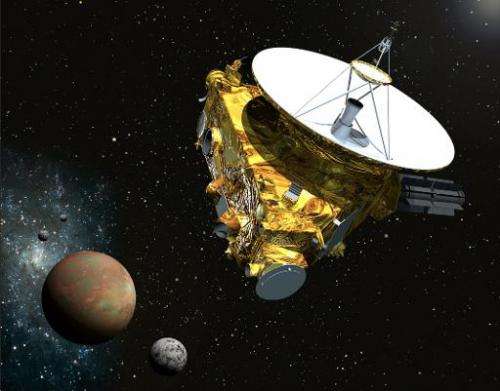NASA craft to probe Pluto after nine-year journey

An American probe that will explore Pluto woke up from its slumber Saturday, after a nine-year journey to take a close look at the distant body for the first time.
"New Horizons is healthy and cruising quietly through deep space, nearly three billion miles from home, but its rest is nearly over," said Alice Bowman, the craft's operations manager at Johns Hopkins University Applied Physics Laboratory outside Washington.
The probe came out of hibernation and transmitted a message to Earth.
New Horizons was launched in January 2006 and was in hibernation for 1,873 days, about two thirds of its journey, to preserve the craft's electric power and minimize resources needed to monitor it.
During its trip, NASA engineers woke the craft every few months to check if its systems were still functioning.
The craft's computer has also been sending a weekly message to Earth that travels four hours to get here.
It aims to study Pluto, an icy body with several moons near the outer reaches of our solar system.
New Horizons begins its exploration of Pluto in January at a distance of about 260 million kilometers (160 million miles) from the body.
The probe will pass closest to Pluto, which travels on an elliptical orbit, in July, just before it ends its research.
During its mission, New Horizons will collect data on Pluto's topography and its largest moon Charon, giving astronomers an up-close look at the dim surfaces that are difficult to see from Earth.
The craft carries onboard seven instruments including infrared and ultraviolet spectrometers, a multicolor camera, a high-resolution telescopic camera and a space dust detector.
All of the instruments aboard New Horizons draw power from a radioisotope thermoelectric generator, which provides less power than a pair of 100-watt light bulbs, scientists said.
After New Horizons finishes its six-month investigation of Pluto, it will pass near other objects in the Kuiper Belt, a vast ring of debris left over from the solar system's birth 4.6 billion years ago.
Scientists identified three possible objects in the Kuiper Belt, about 1.5 billion kilometers from Pluto, that New Horizons could also investigate.
Pluto is about 2,300 kilometers in diameter, smaller than Earth's moon, and has a mass about 500 times less than Earth.
Pluto and its five moons circle the sun every 247.7 years.
In 2006, the International Astronomical Union withdrew Pluto's status as a planet given its small size, reclassifying it as a dwarf planet and leaving the solar system with eight planets.
© 2014 AFP




















